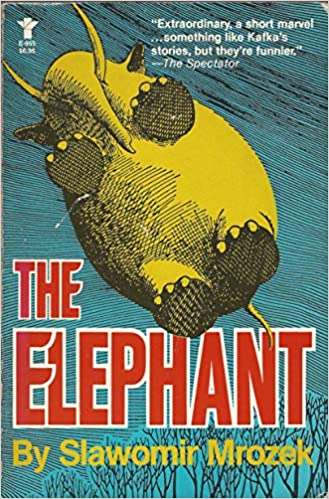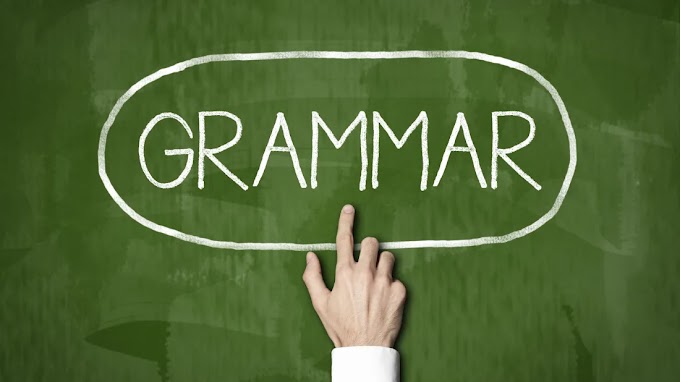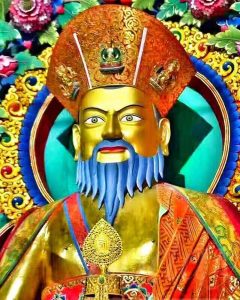Chapter 5 Tension and cooperation after the WWII
Causes of Cold War
In
1945, the United States and Soviet Union were allies, jointly triumphant in
World War II, which ended with total victory for Soviet and American forces
over Adolf Hitler’s Nazi Empire in Europe. Within just a few years, however,
wartime allies became mortal enemies, locked in a global struggle- military,
political, economic, and ideological- to prevail in a new “Cold War”
The
term cold war had an American origin. This term was first used by Bernard
Baruch in 16th April, 1947” let us be deceived today, we are in the
midst of a cold war. The term was picked up by Walter Lippmann and was popularized.
Henceforth,
the term cold war was used to describe the relationship between the Soviet
Union and the western powers after WWII. R.KGarthoff defined cold war as the
conflict between the communist powers and the rest of the world. Thus, cold war
is a war of ideas and ideologies rather than the armed struggle
The
power used all other means than war to weaken each other. It was neither a
condition of war nor a condition of peace. R.Barnet calls it hot Peace and
Kennedy describes it as Hard and bitter peace.
Origin of Cold War
It may
be traced back in 1918 when civil war broke up in Russia in 1918.America,
England, France and Japan sent troops to Russia in support of counter
revolutionaries who hated the Bolshevism.
Ultimately
Communists won but the Russian leaders were convinced that the Capitalist power
wanted to destroy communism. Thus, the future of the cold war was created in
1918.
The
basic cause of the conflict was due to the belief in different principles of
Communism and Democracy. The Communist believed the ideas of Karl Marx, On the
basis that they wanted to rule the state by proletariat. They did not believe
in individualism and political liberty of the people. On the other side, the
supporters of Democracy believed in private ownership of property and democratic
rights of the people. So Democratic and the capitalist were both afraid of
communism spreading to other countries.
During
the WWII, the Allied powers fought shoulder to shoulder against Axis powers.
Stalin wanted to take advantage of military situation to increase Russian influence.
Stalin wanted to capture as much as German territory.
The
western powers saw in it a plan of soviet aggression and became convinced that
Russia wanted to spread communism. The American Government realized that
communism is an international movement whose expansion means an accession of
Soviet Union. So The two powers looked suspicion to each other
The fall of Japan due to the atom bomb (Hiroshima
and Nagasaki) greatly increased the cleavage. American
never revealed to Russia about the atom bomb until it was used on Japan. Thus, Russia was clear that America
had atom bomb and Russian do not.America kept the secret of manufacturing of
atom bomb, which serve as one of the major cause of the cold war.
Impact of WWII on Russia and America
·
During the WWII
America and Russia came close to each other and fought against Nazism and
Fascism
·
Which evaporated after
WWII
·
Mutual disrespect and
suspicion began to appear
·
On many issues
difference of opinion aroused between them
·
Ideological
differences and differences in social and economic policies of Russia and
western powers widened the gap between the two.
·
The spread of
communism in Eastern Europe and formation of blocs by Russia became the source
of danger to America and other western countries
·
In this response
America announced the Truman Doctrine and Marshall Plan
·
The western states
oppose the spread of communism which led to the origin of the western bloc
·
This tension is termed
as Cold War/war of nerves
Truman Doctrine-March12, 1947
The
Truman Doctrine was an American Foreign Policy created to counter Soviet
geopolitical expansion during the cold war. It was first announced to congress
by president Harry S. Truman on march 12, 1947 and further developed on July
12, 1948 when he pledge to contain Soviet threats to Greece and Turkey.
In
Greece, the communist were trying to overthrow the existing monarchy. The Communist
got help from Albania, Bulgaria and Yugoslavia. Under this situation it became
impossible for England to suppress the communist and appealed to America for
help.
The U.S
president Truman appealed to the U.S. Congress for a sanction of $400 million and declared:“It must be the
policy of the united states to free people who were resisting attempted
subjugation by armed minorities or by outside pressure”
This
declaration was known as Truman Doctrine which became the first direct response
to the challenge Soviet Russia
This
also aimed to protect the independent nations from the communist aggression. Greece
was aided by America and defeated the communist. Later Turkey too received aid
and wipeout communism. Which later became clear America was against communism
when America even helped Korea and Vietnam,
Marshall AID, 1947
This
was the economic extension of the Truman doctrine. In 1947 America sponsored a
scheme of economic and financial help known as ERP-European Recovery programme.
It was known as Marshall Plan since it was prepared by Marshall, the American
secretary of states
America
felt that the economic crisis in Europe would help spread communism. The main
aim of the aid was to improve the political and social life of Europe by
fighting out proverty and economic crisis.
Both
the Communist and non- communist countries of the Eastern Europe including
Russia were invited to accept the plan. Soviet Russia rejected the offer on the
ground that American under the cover of this plan wanted to create an economic
empire. Czechoslovakia accepted but later rejected it under the Soviet pressure.
Austria,
Belgium, Luxemburg, Denmark, France, Greece, Iceland, Ireland, Italy,
Netherland, West Germany and Trieste. This operated till June 1952.
Communist Coup in Czechoslovakia
The
communist takeover Czechoslovakia in February, 1948 was a great shocked the
western bloc. Since it was only the democratic state in the Eastern Europe
The
communist and other left parties formed a coalition government after the
election of 1946. Czechoslovakia with its highly developed industries was
expected to remain as a bridge between the East and the West
But a
crisis was seen in early 1948- When election was supposed to take place in May
1948.It signed the communist to lose the election for rejecting the Marshall
plan.
The
communist then used an armed coup to capture power and all non-communist
ministries’ had to resign. The election was held and candidates were all
communist
The
Western powers and the UN protested but to no avail, thus the bridge between
the east and the West was gone.
Berlin Blockade(June1948- May 1949)
The
Berlin blockade by Russian put further tension to the cold war. As per Yalta
and post dam conference it was agreed by the Allied power that:Germany and
Berlin would be divided into four zones each under America, Britain, France and
Russia.
America,
Britain and France organized the economic and political recovery of their respective
zonesBut Russia treated the zone as its satellite and drained its resources for
the Russian development
In 1948-
The three zones came together and formed a single economic unit. With the help
of Marshall Plan the three zones developed economically where as Russia failed.The
western powers wanted the union of four zones where as Russia (Stalin) refuse
it
In June,
1948 the western powers introduced a new currency and ended price control in
their zones and in West Berlin but Russia couldn’t have two currencies in the
same city. Actually Berlin City was situated within East Germany. East Berlin
was embarrassed by the success of the West Berlin
Russia
closed all roads, rails and canal links between West Berlin and West Germany.
In this situation the west decided to send food supply through airplanes to the
blockaded area for the next ten months.
In May,
1949 Russia was compelled to withdraw the blockage. This further worsened the
relation than before. The West Bloc then decided to form NATO (April, 1949) for
their defense.
The formation of NATO-1949
It was
formed as a defense against the Soviet Bloc.
The problem between Western and Eastern Europe over German problem became serious.
America formed a mutual military assistance organization with western countries.
On April4,
1949 America, Britain, France, Italy, Canada, Belgium, Denmark, Luxemburg,
Norway, Portugal, Iceland and the Netherland signed NATO
Later
joined by West Germany, Greece and Turkey, The signing signified that an attack
on one is for all. It was primarily aimed to oppose Russian influence. Stalin
took it as challenge and tension still remain high
The Warsaw Pact (1955)
Soviet Russia
was alarmed of the formation of NATO. Russia opposed the inclusion of West
Germany into thisorganization. Hence Russia formed a rival organization with
Eastern European countries.
Hence Poland,
Hungary, Czechoslovakia, Bulgaria, Albania and East Germany on may4, 1955
signed the pact with its headquarter at Moscow
After
the formation of NATO and the conclusion of the Warsaw pact, it became clear
that Russia would not allow Germany to be united in near future. The representatives of the three western
powers, England, France and America met in Bonn and drafted a federal Constitution
and setup the Germans federal Republic- West Germany on August 1949.
Russian
quickly responded and East Germany was made the German Democratic Republic.
Western Germany joined western bloc and East Germany sided Soviet Bloc. Since
then tension prolonged for long years.
German-Rearmament and foreign policy 1933-1939
The
German Rearmament was an era of rearmament in Germany during the interwar
period (1918-1939), in violation of the Treaty of Versailles. It began as soon
as the treaty was signed, on a small, secret, and informal basis, but it was
massively expanded after the Nazi party came to power in 1933.
The
rearmament program quickly increased the size of the German officer corps, and
organizing the growing army would be their primary task until the outbreak of
World War II in September 1939.
1. German
reaction to the Treaty of Versailles
2. The aim
of Hitler’s Foreign Policy
3. German
Rearmament
4. The
Saar Plebiscite
5. The
Remilitarization of the Rhineland
6. The
Anschluss of the Rhineland
7. The
Sudetenland Crisis
8. The
Munich Agreement and Appeasement
9. The
invasion of Czechoslovakia
10. The
Nazi- Soviet pact
11. The
Invasion of Poland
Regional Economic Cooperation since WWII
After
the end of the WWII, there was a gradual deterioration in relation between the
western powers and Soviet Russia, there began a move for European integration,
with the objective to strengthen the political, economic and social ties of
Europe in the face of struggle between America and Russia. There were many
reasons for this attempt of the integration of the European states as shown
below:
1.
Economic Integration
Benelux
customs convention of 1944 was setup with Belgium, Netherland and Luxemburg as
the member. Under its terms, the tariff walls among the signatory states were
abolished and free trade was set up
2.
Financial Integration
To
provide European countries with finance, America sponsored the “Economic
Cooperation Act” 1948 and laterin 1960 this Organization was transformed into
organization for European Economic Cooperation and Development”
The
representatives of signatory states are Austria, France, Italy, West Germany,
Belgium, Denmark Luxemburg, Iceland, Greece, the Netherland, Portugal, Norway,
Turkey, Sweden, Britain, America and Canada.
Their
aim was to improve the economic standards of the member countries without the
foreign aid.
3. European
Economic Council-EEC
It was
setup in 1957 to open market in agriculture and industry for the participating
countries. They wanted to end the tariff walls among the participating states
Britain,
France, Belgium, Italy, Luxemburg, the Netherland and West Germany were the
members of the EEC
They
wanted to have common market for themselves which created a strong reaction
among African and Common wealth countries
1961-
Britain showed interest to join the common market which alarmed the common
wealth countries. They apprehended Britain’s entry would endanger their terms
of trade
1962-
During common wealth PM’s conference, Britain’s entry was opposed, France too
opposed it strongly
President
De Gaulle was not happy about Britain’s American connection in fear of American
domination
Jan1,
1973, Britain entered EEC after the resignation of De Gaulle in1969
4.
South East Asia
South
East Asia was a fertile area and countries like Burma (Myanmar) and Thailand
are known for the rice production. Malaysia was known as natural resources like
rubber and tin
This
region came under the colonial domination of the British, French, Dutch and
Portuguese, Even Japan too for the short period during WWII
During
the long Vietnam Warit alarmed the leaders of South East Asia for the union. The
communist victory over Vietnam feared the leaders that they might become the
victim of the communist too. Because China and Russia had already shown their interest in this region.
Hence
the government of Indonesia, Malaysia, Singapore, Philippines and Thailand
formed the association of South East Asian Nations (ASEAN) through the Bangkok
Declaration of August8, 1967
Through
the Bangkok declaration, they wanted to make the region a “Zone of Peace,
freedom and Neutrality”
Aim : Help
the economic growth, social progress, cultural development and to promote
regional peace and stability in the region
Outcome
of ASEAN
- After 1975 the organization started joint ventures in the field of agriculture, fishing, finance, Banking, shipping, Tourism
- They started negotiation with Western power for more trade under General agreement on tariffs and trade
- It also emerged as an organization of military power








0 Comments